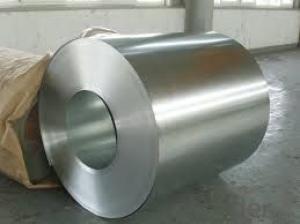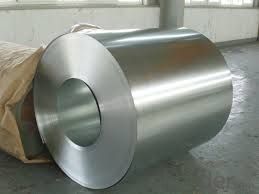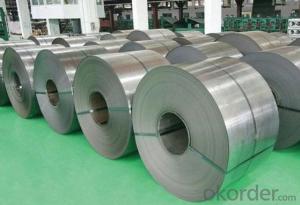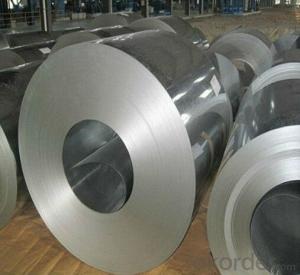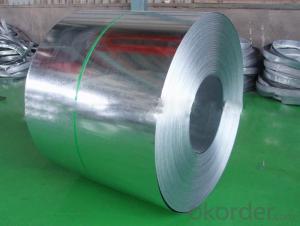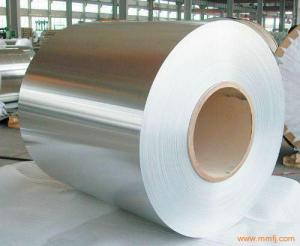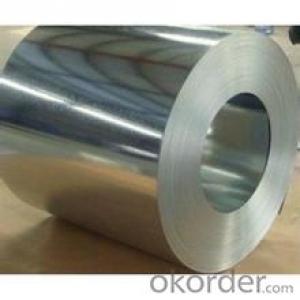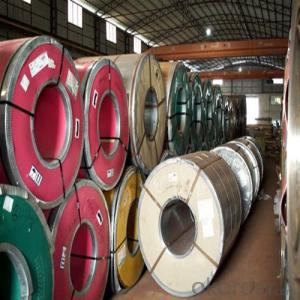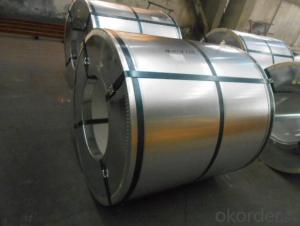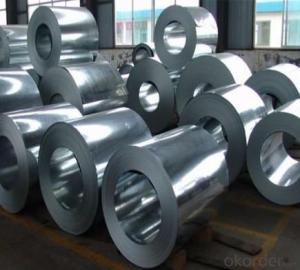Hot Dipped Galvanized Steel in Cold Rolled
- Loading Port:
- Shanghai
- Payment Terms:
- TT OR LC
- Min Order Qty:
- 20 m.t.
- Supply Capability:
- 9000 m.t./month
OKorder Service Pledge
OKorder Financial Service
You Might Also Like
Cold Rolled Steel Coil
Advantages of our Cold Rolled Steel coils
1.Excellent corrosion resistance.: The zinc layer provides a good protection of Pre-painted Galvanizeed Steel Sheet.
2.High heat resistance: The reflective surface of the material aids in efficiently reflecting the sunlight away and in turnreducing the amount of heat transmitted.The thermal reflectivity converts into energy savings.
3.Aesthetics: Pre-Painted Galvanized steel sheet is available in plethora of patterns and multiple sizes as per the requirements that given by our customers.
4.Versatility: can be used in the various areas.
Specifications
COLD ROLLED STEEL COILS
Thickness: 0.12-2.5mm
Coil width:600-1250mm
Coil weight: 2.0-8.0MT
Steel grades:Q195-Q345,GR.A,SGCC, SPCC,SPHC,DX51D, ETC.
Standard: JIS G3302, JIS G3313, ASTM A653, GB/T2518-88, GB11253-89,ASTM A1008-2000,BS,ETC.
Place of Origin: Shandong, China (Mainland)
Standard: AISI, ASTM, BS, DIN, GB, JIS
Type: Steel Coil
Technique: Cold Rolled
Packing
Standard seaworthy export packing:
3 layers of packing, inside is kraft paper, water plastic film is in the middle and outside GI steel sheet to be covered by steel strips with lock,with inner coil sleeve.
Standard
JIS G 3312, ASTM A755, EN10169,GB/T2518
Base sheet: Galvanized steel coils\ Galvalume steel, such as SGCC, CGCC, DX51D+Z, Q195,etc
Base metal: Hot galvanized steel or PrePainted Galvanized aLuminium steel or HBR>85
Techinque: Cold rolled, hot-dipped galvanizing, color coated
Quality: CQ DQ prime
Lifespan: 10-15 years
Payment and Delivery Time
1. Payment: 30% T/T as deposit and 70% balance irrevocable L/C at sight or nogotiate
2. Delivery Time: 10-20 days after recepit of 30% T/T.
Applications of Cold Rolled steel coil
The great cold plate can be used for chemical industry,dye,oil and other packaging materials,with a barrel for house-hold appliances of various parts of the processing and production,for motorcycle cylinder, cylinder,car door,chassis and other parts of the production.Agricultural vehicle body,ventilation pipe light construction,anti-static floor panels,door panels,large dust collector inside the grid plate,a bicycle handle,metal materials,machinery processing and other industries.
Our Strength
--ISO,SGS,BV,CE approved
--Competitive price with best quality and service
--Nearest sea port, Convenient transportation
--More than 20 years Export Experiences
| Raw material | SGCC, SPCC, DC51D, SGHC,A653 |
| Steel gardes | Q195-Q345, GR.A, SGCC, SPCC,CGCC,SPHC, DX51D, etc. |
| Standard | JIS G3302, JIS G3313, ASTM A653, GB/T2518-88, GB11253-89, ASTM A1008-2000, BS, etc. |
| Thickness | 0.12mm-2.5mm |
| Width | 600mm-1250mm |
| Tolerance | thickness+/-0.01mm |
| Single weight | 2.0-8.0MT |
| Packing | Wrapped by plastic film and waterproof paper, and then fastened on wooden pallet. Or as you request. |
| Minimum quantity | Can be 25MT |
| Price | |
| Delivery time | 15-20 days after we sign the contract. |
| Payment terms | T/T or L/C |
| Supply ability | 15000 MT per month |
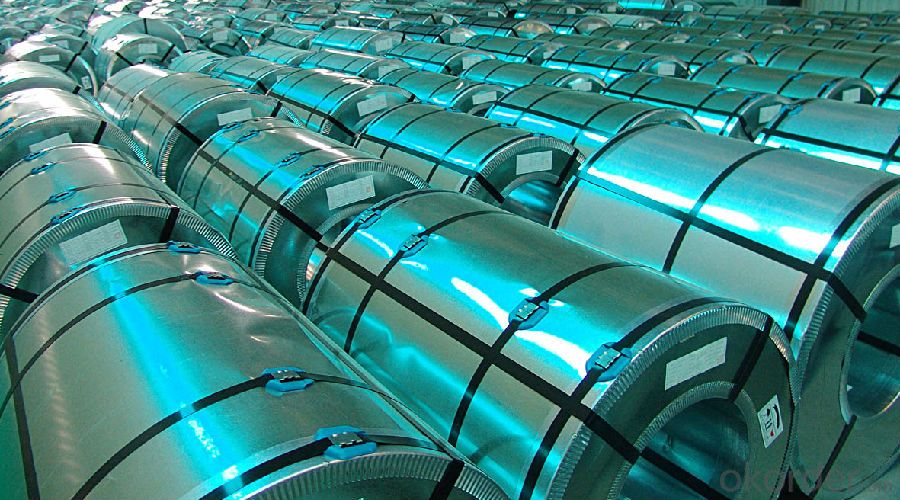 we can supply the galvanized steel coils you need with most competitive price and high quality.
we can supply the galvanized steel coils you need with most competitive price and high quality.
Special size and standard can be accepted!
FAQ
1. Is the sample available?
Yes, samples can be sent for test if you need.
- Q: Which steels were origianally designed to be used to cut and shape metals and other materials?- alloy steel- high carbon steel- carbide steel- tool steelthanks
- In your choices carbide steels are used for milling and drilling purposes and high speed steel are used in lathe operations. For shaping the tools, tool grinding machines are used and for initial sharing dyes are used.
- Q: Steel sticks- it has meaning to us -similar to my deceased father's name, Steven fits our style as people. We like the hardness of it for our little man. We need a middle name though. Open to suggestions, thank you=)
- Steel Keith Tompkins Steel Caleb Tompkins Steel Jude Tompkins Steel Lukas Tompkins Steel Ezekiel Tompkins Steel Cole Tompkins Steel Colin Tompkins Steel Lars Tompkins
- Q: What are the common surface defects found in steel coils?
- Steel coils can have several surface defects commonly found. One prevalent defect is rust or corrosion, which happens when moisture contacts the steel surface and causes oxidation and rust formation. Another defect is scratches or abrasions, occurring during coil handling or transportation. These can vary from small surface scratches to deeper gouges that affect the steel's structural integrity. Surface roughness or unevenness is also possible due to improper rolling or cooling processes during manufacturing, resulting in inconsistent surface texture that affects appearance and performance. Scale is another defect, forming an oxide layer during manufacturing, giving the steel a rough and uneven look. Finally, oil or grease stains may occur during manufacturing or handling, impacting paint or coating adhesion. These common surface defects impact steel quality, appearance, and performance, often requiring cleaning, grinding, or recoating as remedial actions.
- Q: How do steel coils perform in extreme weather conditions?
- Steel coils are highly durable and resistant to extreme weather conditions. They can withstand intense heat, freezing temperatures, heavy rain, and strong winds without losing their structural integrity or performance.
- Q: How are steel coils inspected for quality?
- Steel coils are inspected for quality through a combination of visual examination, measurements, and non-destructive testing techniques such as ultrasonic testing, magnetic particle inspection, and eddy current testing. These methods help detect surface defects, dimensional accuracy, and internal flaws, ensuring that the steel coils meet the required quality standards.
- Q: How are steel coils used in the production of packaging materials?
- Steel coils are used in the production of packaging materials as they are processed and shaped into various forms, such as sheets or strips, which can be used to create durable and sturdy packaging products. These coils are often used to make packaging materials like cans, drums, and containers, providing strength, structural stability, and protection to the packaged goods during storage and transportation.
- Q: What are the challenges in coil edge trimming for narrow strips?
- Some challenges in coil edge trimming for narrow strips include maintaining consistent strip width, preventing edge defects and burrs, ensuring accurate and precise trimming, handling thin and delicate materials, minimizing waste, and achieving high production speeds while maintaining quality standards.
- Q: Are steel coils used in automotive manufacturing?
- Yes, steel coils are commonly used in automotive manufacturing. They are used to make various components of vehicles such as body panels, chassis, and suspension systems. The high strength and durability of steel make it an ideal material for ensuring the safety and performance of automobiles.
- Q: My teacher says if they were that they would still be standing today. I'm not sure if he means the reinforced steel in the concrete beams, columns etc or if the whole beams and columns floor etc were were made of reinforced steel.
- Reinforced Steel is found in concrete, and if the towers were built with reinforced concrete (concrete beams with rebar) then they would likely still be standing. The twin towers were made of steel. When steel is heated up, it deforms and collapses, which is why it didnt stand up. One of the top 2 things against steel is that it is not fire resistant.
- Q: What are the different types of steel coil handling devices?
- There are several types of steel coil handling devices, including coil lifters, coil grabs, coil tongs, coil hooks, and coil transfer cars.
Send your message to us
Hot Dipped Galvanized Steel in Cold Rolled
- Loading Port:
- Shanghai
- Payment Terms:
- TT OR LC
- Min Order Qty:
- 20 m.t.
- Supply Capability:
- 9000 m.t./month
OKorder Service Pledge
OKorder Financial Service
Similar products
Hot products
Hot Searches
Related keywords
